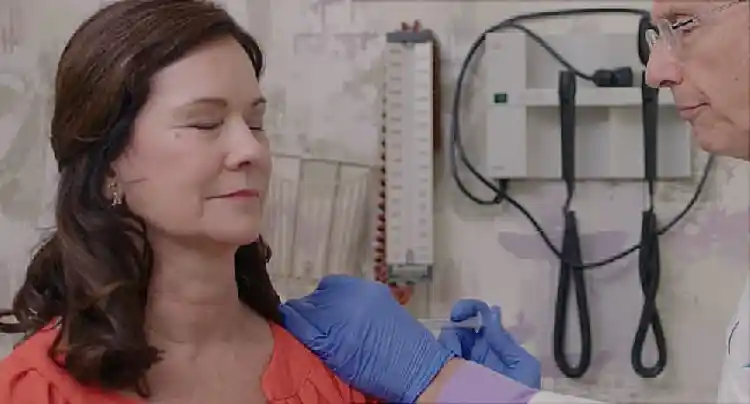OA Treatments, From Pills to Injections

Hide Video Transcript
Video Transcript
[MUSIC PLAYING]
What we also have available for osteoarthritis is local injections. We've been doing steroid injections into different joints for literally 50 to 75 years. The most common injection is going to be corticosteroids, and that is usually mixed with an anesthetic-- a numbing agent-- and that is injected locally into a joint. The most common one that people are aware of is either going to be in your shoulders or specifically into the knees. That's the most common series.
But when cortisone injections don't work, what's my next option? The next is a group of medications called viscosupplements, and this is a material called hyaluronic acid. And hyaluronic acid is the essence of the lubricating and anti-inflammatory component of your own joint fluid to begin with.
Well, companies were smart enough and derived a large portion of these from rooster comb. And this is what is called the "chicken cartilage injections," and these have been using for the last 10 years or so, this is a series of one, three, or five injections into a knee.
But the future will be-- what are the regenerative drugs going to do for us? What is PRP, and what are stem cells going to do for us in the future? And time will tell on those.
GARY MYERSON
In regards to treatments of osteoarthritis, I have oral medications and I have injections. The group of oral medications are referred to as non-steroidal anti-inflammatory drugs, and we have multiples of those. And all of those basically are there to decrease inflammation, pain, and swelling, and that's the difference between a non-steroidal anti-inflammatory drug and acetaminophen or Tylenol. They only work for fever and reducing pain. So that's basically the oral medications that we have available. What we also have available for osteoarthritis is local injections. We've been doing steroid injections into different joints for literally 50 to 75 years. The most common injection is going to be corticosteroids, and that is usually mixed with an anesthetic-- a numbing agent-- and that is injected locally into a joint. The most common one that people are aware of is either going to be in your shoulders or specifically into the knees. That's the most common series.
But when cortisone injections don't work, what's my next option? The next is a group of medications called viscosupplements, and this is a material called hyaluronic acid. And hyaluronic acid is the essence of the lubricating and anti-inflammatory component of your own joint fluid to begin with.
Well, companies were smart enough and derived a large portion of these from rooster comb. And this is what is called the "chicken cartilage injections," and these have been using for the last 10 years or so, this is a series of one, three, or five injections into a knee.
But the future will be-- what are the regenerative drugs going to do for us? What is PRP, and what are stem cells going to do for us in the future? And time will tell on those.
